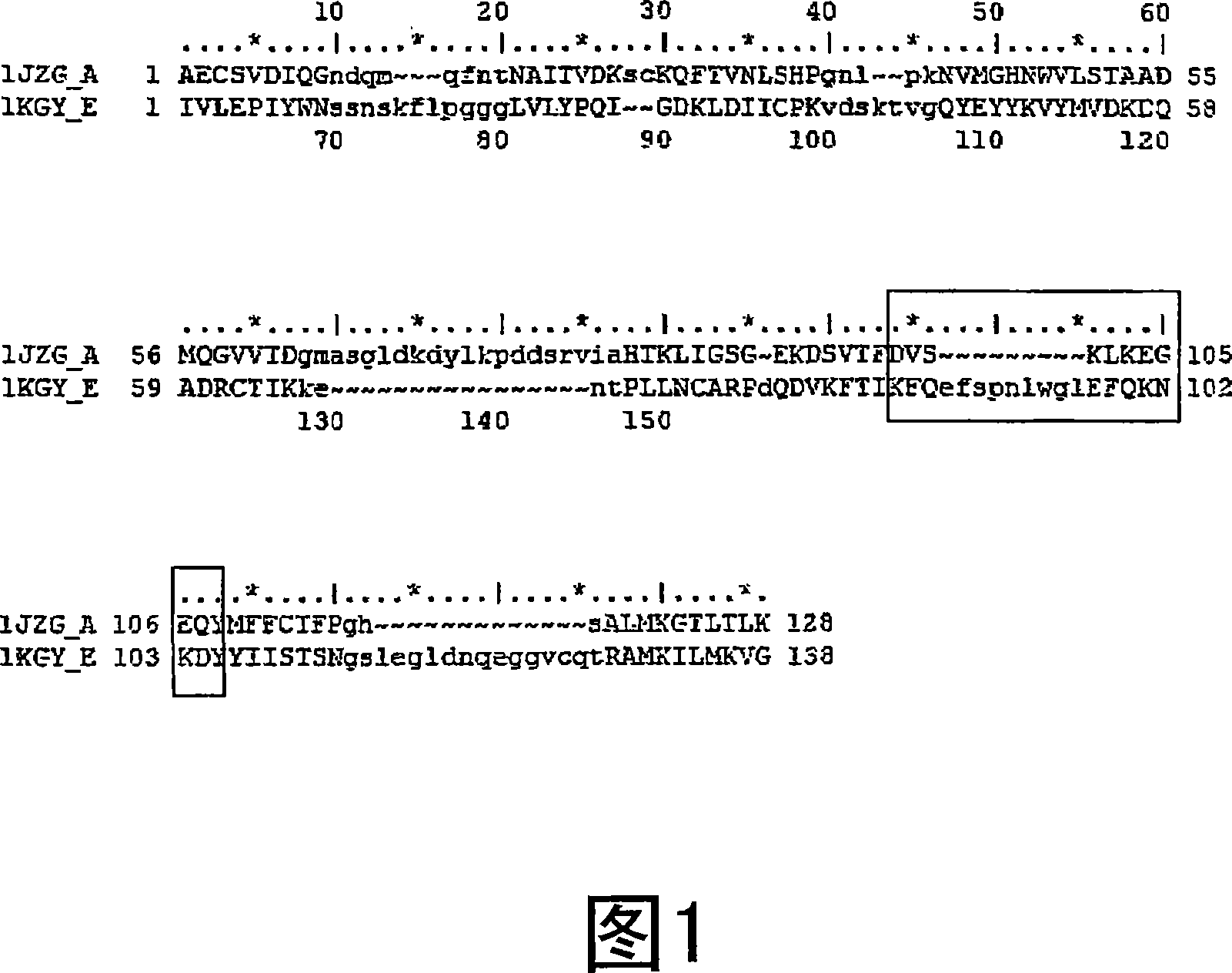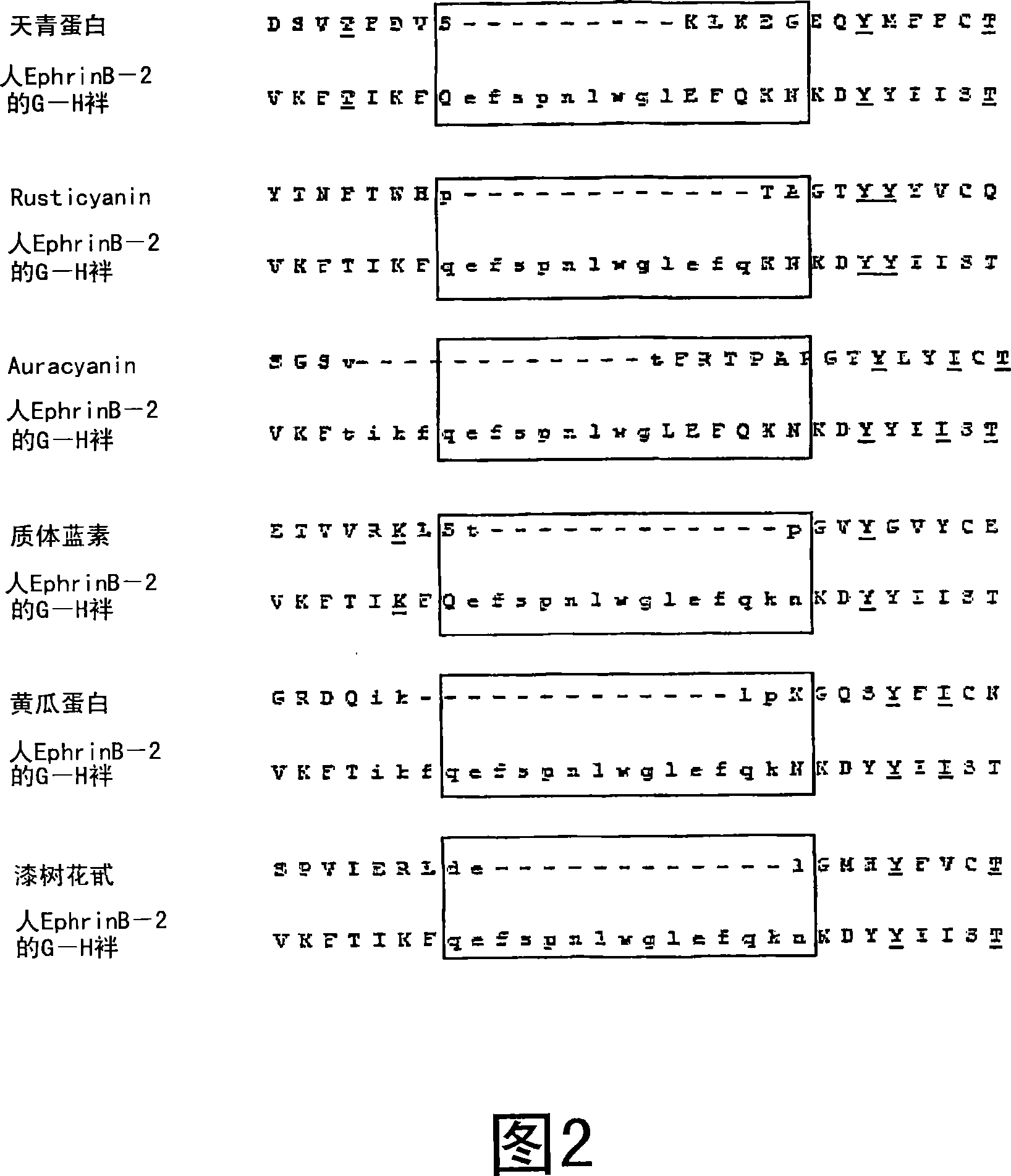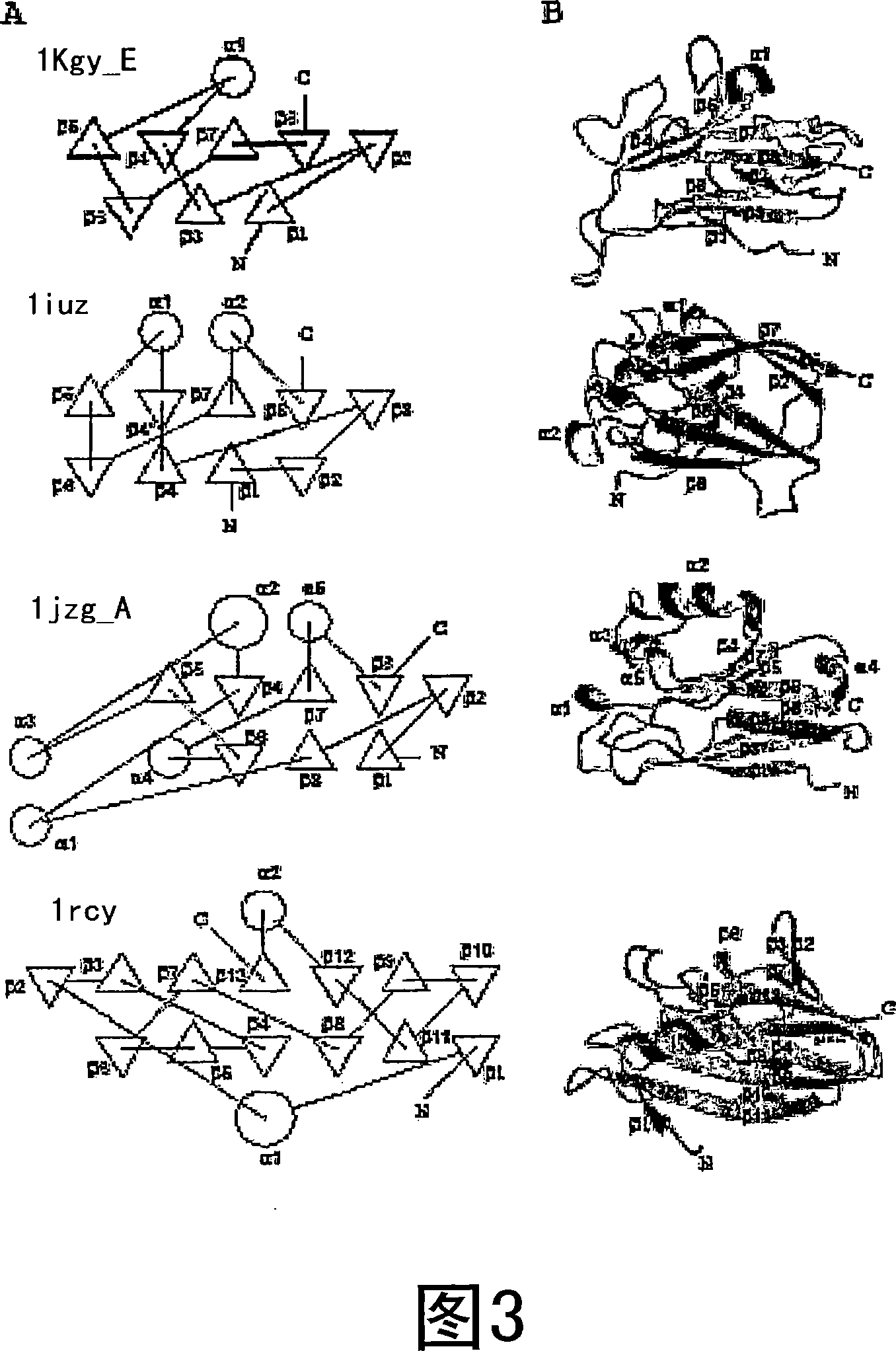Compositions and methods for treating conditions related to EPHRIN signaling with cupredoxins
A composition, copper-oxygen technology, which is applied in the preparation methods of peptides, chemical instruments and methods, preparations for in vivo tests, etc., can solve the problems of threatening non-cancer cells and so on
- Summary
- Abstract
- Description
- Claims
- Application Information
AI Technical Summary
Problems solved by technology
Method used
Image
Examples
Embodiment 8
[0103] The inventors have also found that cupredoxin, which has a similar structure to the loop region of Ephrin G-H, inhibits the growth of mammalian cancer cells in vitro. In summary, plastocyanin from Phormidiumlaminosum, Rusticyanin from Thiobacillus ferrooxidans, and Pseudomonas azurinin all inhibited Mel-2 human melanoma cells and MCF-7 human breast cancer cells in the trypan blue assay. Growth in vitro. See Example 4. In addition, it is now known that the 88-113 residue region of azurin can inhibit the cell growth of MCF-7 breast cancer cells. See Example 10. Finally, it is now known that the 18-mer azurin peptide and the 15-mer pore Ulva plastocyanin peptide corresponding to the structurally similar region of the EphrinB2 GH loop region can inhibit MCF-7 human breast cancer cells, CCF in vitro -Growth of STTG1 brain tumor astrocytoma cells and LN-229 glioblastoma. See Examples 3 and 9.
Embodiment 3 and 9
[0104] Surprisingly, cupredoxin, which is similar in structure to the G-H loop of EphrinB2, can also affect Ephrin-related development in the body. It is now known from the in vivo study of the Ephrin-related development of C. elegans that the cupredoxin Rusticyanin interferes with the formation of tail muscles, while the cupredoxin azurrin prevents embryonic development, both of which are Ephrin related development. See Example 1.
Embodiment 1
[0105] It is now understood that in addition to azurin, the cupredoxin Rusticyanin and plastocyanin also share structural homology with the G and H regions of EphrinB2. See Examples 2 and 5. In addition, it is known that azurin, Phytocyanin and cucumber basic protein share significant structural homology with Ephrin. Because of the general structural conservation in the cupredoxin protein family, it is expected that many other cupredoxins and cupredoxin-like proteins will also show significant structural homology with Ephrin. See Example 2. Therefore, it is proposed that using the composition and method of the present invention, cupredoxin family proteins can generally be used to treat Ephrin signaling-related diseases and cancers. Related special cupredoxins include, but are not limited to, azurin, Rusticyanin, plastocyanin, anacyanin, auracyanin, pseudoazurin, and cucumber basic protein. Exemplary protein sequences here are plastocyanin (SEQ ID NO: 2 and 22), Rusticyanin (SEQ ID...
PUM
 Login to View More
Login to View More Abstract
Description
Claims
Application Information
 Login to View More
Login to View More - R&D
- Intellectual Property
- Life Sciences
- Materials
- Tech Scout
- Unparalleled Data Quality
- Higher Quality Content
- 60% Fewer Hallucinations
Browse by: Latest US Patents, China's latest patents, Technical Efficacy Thesaurus, Application Domain, Technology Topic, Popular Technical Reports.
© 2025 PatSnap. All rights reserved.Legal|Privacy policy|Modern Slavery Act Transparency Statement|Sitemap|About US| Contact US: help@patsnap.com



